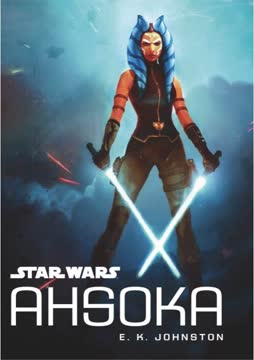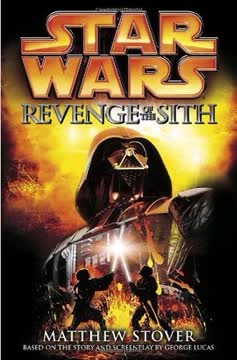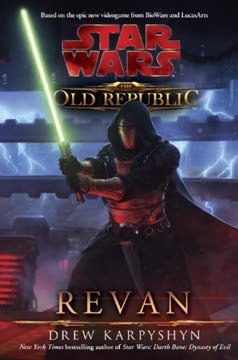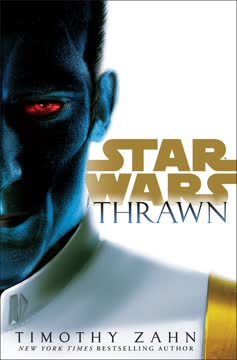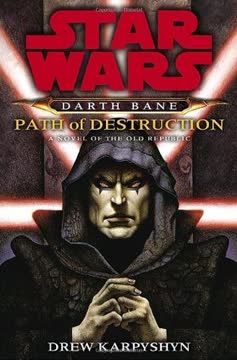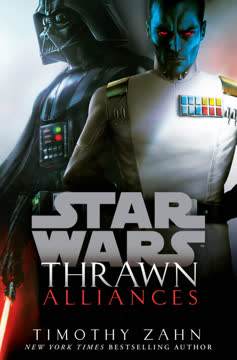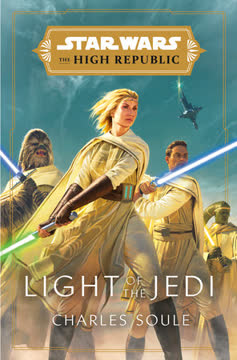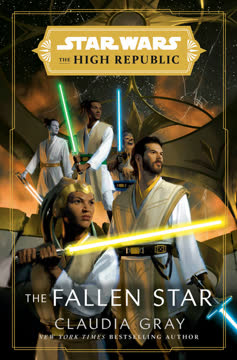Plot Summary
Ahsoka's New Path
After leaving the Jedi Order, Ahsoka Tano is on the run, trying to find her place in a galaxy now ruled by the Empire. She settles on the remote moon of Raada, hoping to live quietly. However, the Empire's oppressive reach soon extends to Raada, forcing Ahsoka to confront her past and decide whether to fight back or continue hiding. Her journey of self-discovery is marked by the shadows of her former life as a Jedi and the weight of her decisions.
Shadows of the Past
Haunted by memories of the Clone Wars and her time as Anakin Skywalker's padawan, Ahsoka struggles with guilt and loss. She reflects on the betrayal that led her to leave the Jedi Order and the destruction of the Jedi by the Empire. As she grapples with her identity, Ahsoka must decide if she can ever be part of something greater again or if she is destined to remain alone.
Imperial Threat Looms
The peace on Raada is shattered when the Empire arrives, seeking to exploit the moon's resources. Ahsoka witnesses the suffering of the locals and is torn between her desire to help and the need to keep her identity hidden. As the Empire tightens its grip, Ahsoka's resolve is tested, and she must choose whether to stand against the tyranny or flee once more.
Resistance Awakens
As the Empire's oppression grows, Ahsoka becomes a beacon of hope for the people of Raada. She begins to organize a resistance, using her skills and knowledge to train the locals in guerrilla tactics. Despite the risks, Ahsoka's leadership ignites a spark of rebellion, and the people of Raada rally around her, ready to fight for their freedom.
Ahsoka's Return
After leaving Raada to protect her friends, Ahsoka returns to find the situation dire. The Empire's forces have increased, and a mysterious Inquisitor is hunting her. Ahsoka must face her fears and embrace her role as a leader. With new allies and a renewed sense of purpose, she prepares to confront the Inquisitor and protect those she cares about.
The Inquisitor's Hunt
The Inquisitor, a dark force user, is relentless in his pursuit of Ahsoka. As she navigates the dangers of Raada, Ahsoka must outsmart her enemy while keeping her friends safe. The stakes are high, and Ahsoka's skills are put to the test as she battles the Inquisitor in a fight that will determine the fate of Raada and her own future.
A New Alliance
After defeating the Inquisitor, Ahsoka realizes she cannot fight the Empire alone. She joins forces with Bail Organa and the burgeoning Rebel Alliance, taking on the codename "Fulcrum." With a new mission and a network of allies, Ahsoka embraces her role in the fight against the Empire, determined to bring hope to the galaxy.
Characters
Ahsoka Tano
Ahsoka Tano is a former Jedi Padawan who left the Order after being falsely accused of a crime. Haunted by her past and the destruction of the Jedi, she struggles with her identity and purpose. Throughout the story, Ahsoka evolves from a lone fugitive to a leader of resistance, ultimately finding a new path as part of the Rebel Alliance.
Anakin Skywalker
Anakin Skywalker was Ahsoka's mentor and a powerful Jedi Knight. His fall to the dark side and transformation into Darth Vader deeply affects Ahsoka, who grapples with the loss of her friend and the betrayal of the Jedi Order. Anakin's shadow looms over Ahsoka as she seeks to forge her own destiny.
Bail Organa
Bail Organa is a key figure in the early Rebel Alliance, working to undermine the Empire's control. He provides Ahsoka with resources and support, recognizing her potential as a leader. Bail's commitment to the cause and his willingness to take risks make him a crucial ally in the fight against tyranny.
The Inquisitor
The Inquisitor is a formidable enemy tasked with hunting down Jedi survivors. Skilled in the dark side of the Force, he poses a significant threat to Ahsoka and the people of Raada. His pursuit of Ahsoka forces her to confront her fears and embrace her role as a protector.
Kaeden Larte
Kaeden is a resident of Raada who becomes a key figure in the resistance against the Empire. Inspired by Ahsoka's bravery and leadership, Kaeden grows from a simple farmer to a determined fighter. Her loyalty and courage make her an invaluable ally in the struggle for freedom.
Miara Larte
Miara is Kaeden's younger sister, who looks up to Ahsoka and is eager to join the fight against the Empire. Despite her youth, Miara is resourceful and brave, contributing to the resistance with her technical skills and determination.
Rex
Captain Rex is a clone trooper who served alongside Ahsoka during the Clone Wars. Though not present in the story, his influence and friendship are felt throughout Ahsoka's journey. Rex represents the camaraderie and loyalty that Ahsoka longs for as she navigates her new life.
Hedala Fardi
Hedala is a young girl with a natural connection to the Force. Ahsoka recognizes her potential and takes steps to protect her from the Empire's reach. Hedala's presence serves as a reminder of the hope and future that the Jedi once represented.
Plot Devices
The Force
The Force is a central element in Ahsoka's journey, representing both her past as a Jedi and her potential for the future. It guides her decisions and actions, helping her find her place in the galaxy. The Force also connects Ahsoka to others, allowing her to inspire and lead those around her.
The Inquisitor's Pursuit
The Inquisitor's pursuit of Ahsoka creates tension and urgency throughout the story. His presence forces Ahsoka to confront her fears and embrace her role as a leader. The Inquisitor's hunt also highlights the dangers faced by Jedi survivors in the Empire's galaxy.
The Rebel Alliance
The Rebel Alliance represents the growing resistance against the Empire's tyranny. Ahsoka's involvement with the Alliance provides her with a new purpose and a network of allies. The Alliance's struggle for freedom mirrors Ahsoka's personal journey of self-discovery and redemption.
Analysis
"Ahsoka" by E.K. Johnston explores themes of identity, loss, and resilience. Ahsoka Tano's journey from a lone fugitive to a leader in the Rebel Alliance highlights her growth and determination to fight for justice. The story emphasizes the importance of hope and the power of individuals to make a difference, even in the face of overwhelming odds. Ahsoka's struggle to reconcile her past with her present reflects the broader conflict between the light and dark sides of the Force, ultimately showcasing her strength and resilience as she embraces her new role in the fight against the Empire.
Last updated:
FAQ
0. Synopsis & Basic Details
What is Ahsoka about?
- A Former Jedi's Struggle: The novel Ahsoka by E.K. Johnston follows Ahsoka Tano, a former Jedi Padawan, as she navigates a galaxy under Imperial rule after the devastating Order 66. Living under the alias "Ashla" on the remote moon of Raada, she attempts to shed her past and avoid detection.
- Forced to Confront Tyranny: When the Empire extends its oppressive reach to Raada, exploiting its resources and people, Ahsoka is compelled to abandon her quiet life. She reluctantly uses her skills to organize a local resistance, inspiring farmers to fight for their freedom against overwhelming odds.
- Embracing a New Purpose: After a climactic confrontation with an Imperial Inquisitor and a difficult decision to evacuate Raada, Ahsoka is recruited by Senator Bail Organa. She ultimately accepts her role in the burgeoning Rebel Alliance, taking on the codename "Fulcrum" and forging a new path as a leader in the fight for galactic liberation.
Why should I read Ahsoka?
- Deep Character Exploration: Readers should delve into Ahsoka for an intimate look at Ahsoka Tano's post-Jedi identity crisis, offering profound Ahsoka Tano motivations and emotional depth as she grapples with survivor's guilt and the weight of her past. The novel provides crucial Ahsoka character development that bridges her animated appearances with her live-action future.
- Subtle World-Building & Themes: E.K. Johnston masterfully weaves in subtle details about the early days of the Empire, showcasing its insidious methods of control beyond direct military force, and exploring themes in Ahsoka such as hope, resilience, and the nature of family, both by blood and by choice.
- Origin of Iconic Elements: The book offers the compelling Ahsoka white lightsabers meaning and origin story, a pivotal moment for fans, alongside the early formation of the Rebel Alliance and the introduction of key figures like Bail Organa, making it essential for understanding the broader Star Wars narrative.
What is the background of Ahsoka?
- Post-Order 66 Galaxy: The story is set approximately one year after the events of Revenge of the Sith, detailing the immediate aftermath of the Jedi Purge and the rise of the Galactic Empire. This Ahsoka background explained context highlights the pervasive fear and oppression across the galaxy, forcing survivors like Ahsoka into hiding.
- Remote Outer Rim Setting: Ahsoka initially seeks refuge on the Outer Rim moon of Raada, a sparsely populated agricultural world. This choice reflects her desire for anonymity and the Empire's initial focus on more resource-rich or strategically important planets, though its reach eventually extends even to such remote locales.
- Jedi Order's Fall & Legacy: The narrative is deeply informed by the destruction of the Jedi Order, which Ahsoka left prior to Order 66. Her internal struggles are rooted in the loss of her former family, the Jedi, and the guilt of her survival, constantly referencing her past as Anakin Skywalker's Padawan and her bond with Rex.
What are the most memorable quotes in Ahsoka?
- "¿Cuándo vas a admitir ante ti misma que estás sola? Están muertos, ya no están a tu lado, solo quedas tú." (Chapter 1): This poignant internal monologue encapsulates Ahsoka's profound loneliness and survivor's guilt, revealing her struggle to accept the loss of her Jedi family and her former master, Anakin Skywalker. It's a key insight into Ahsoka Tano motivations for isolation.
- "No es seguro ser como yo. El Imperio paga mucho por los jedi y no les muestra ninguna misericordia." (Chapter 14): Ahsoka's confession to Miara and Kaeden highlights the immense personal risk she carries, explaining her initial secrecy and the constant threat she faces. This quote underscores the perilous reality for Force sensitivity in Ahsoka and other survivors.
- "Antes eran rojos. Cuando la criatura los tenía, eran rojos. Pero los oí antes de verlo en Raada y supe que eran para mí. [...] Los restauré. Los liberé." (Chapter 30): Ahsoka's explanation of her white lightsabers meaning to Bail Organa is a powerful moment of self-definition. It symbolizes her unique path, her rejection of both the Jedi's rigid dogma and the Sith's corruption, and her commitment to the Light Side on her own terms.
What writing style, narrative choices, and literary techniques does E.K. Johnston use?
- Intimate Third-Person Perspective: Johnston primarily employs a close third-person perspective, often delving into Ahsoka's internal thoughts and emotional turmoil. This narrative choice allows readers deep access to Ahsoka Tano's psychological complexities, her grief, guilt, and evolving sense of purpose, making her journey highly personal.
- Flashbacks and Interludes: The novel frequently uses flashbacks, particularly to Ahsoka's time with Anakin Skywalker and Rex during the Clone Wars, and to Obi-Wan Kenobi's solitary existence. These interludes provide crucial context for Ahsoka's present struggles and highlight the broader impact of the Empire's rise, enriching the Ahsoka analysis.
- Symbolism and Motif Repetition: Johnston subtly integrates symbolism, such as the recurring motif of the crokin game representing strategy and community, and the "shadow" sensed by Hedala Fardi symbolizing the dark side's presence. The transformation of the lightsaber crystals from red to white is a powerful visual metaphor for Ahsoka's unique path and moral clarity, central to Ahsoka symbolism.
1. Hidden Details & Subtle Connections
What are some minor details that add significant meaning?
- Empty Weapon Belt's Weight: Ahsoka's decision to keep her empty weapon belt, despite not using it, is a subtle detail (Chapter 1). It symbolizes her lingering connection to her past as a warrior and Jedi, even as she tries to live a quiet life, hinting at her readiness to fight when necessary and the internal conflict of her Ahsoka Tano motivations.
- Crokin Game as Life's Metaphor: The recurring game of crokin (Chapters 7, 9, 10, 21, 23) serves as a subtle metaphor for strategy, community, and the unpredictable nature of conflict. Ahsoka's initial unfamiliarity and later understanding of its nuances mirror her adaptation to civilian life and her eventual role in organizing the Raadan resistance, providing a unique lens for themes in Ahsoka.
- Fardi Children's Anonymity: The Fardi children's casual remark, "Nadie se sabe nuestros nombres... Así evitamos la ley" (Chapter 17), is a minor detail that reveals the family's deep-seated experience with clandestine activities. It subtly explains their quick acceptance of "Ashla" and their understanding of the need for hidden identities, foreshadowing their own involvement in illicit, yet benevolent, trade.
What are some subtle foreshadowing and callbacks?
- Hedala's Force Sensitivity: The young Hedala Fardi's ability to subtly move a pebble with her mind (Chapter 10) and sense the "shadow" (Chapter 17, 18) is a clear, yet understated, foreshadowing of the Inquisitor's hunt for Force-sensitive children. This detail highlights the pervasive danger for potential Jedi and sets up Ahsoka's later commitment to protecting such individuals, a key aspect of Force sensitivity in Ahsoka.
- Anakin's Fighting Style Echoes: Ahsoka's internal comparison of her fighting style to Anakin's impulsiveness and Obi-Wan's charm (Chapter 1) is a callback to her Jedi training. It subtly foreshadows her own evolving combat approach, blending elements of both masters while developing her unique, more measured style, crucial for her Ahsoka character development.
- The Inquisitor's "Shadow": Hedala's description of the Inquisitor's presence as a "shadow" (Chapter 17, 18) is a subtle foreshadowing of his dark side nature and his role as a hunter of Force-sensitives. This abstract perception by a child underscores the Inquisitor's malevolent influence and the inherent danger he poses, adding depth to Ahsoka symbolism.
Who are the most significant supporting characters?
- Kaeden Larte: The Heart of Raada: Kaeden represents the spirit of the Raadan people, embodying their resilience and loyalty. Her initial skepticism of Ahsoka (Chapter 10) and eventual unwavering trust (Chapter 29) highlight Ahsoka's impact, while her capture and torture (Chapter 15) serve as a powerful catalyst for Ahsoka's return and renewed commitment to fighting the Empire.
- Selda: The Silent Networker: The scarred Togruta bartender, Selda, is a quiet but crucial figure. His shared heritage with Ahsoka (Chapter 5) creates an immediate, unspoken bond, and his role in providing supplies and intelligence to the resistance (Chapter 10) demonstrates the vital, often overlooked, networks of support in oppressed communities.
- Hedala Fardi: A Glimmer of Hope: Hedala, the Force-sensitive Fardi child, is a poignant symbol of the Jedi's lost future and the Empire's threat to it (Chapter 10, 17, 18). Her presence motivates Ahsoka to consider the broader implications of her actions beyond Raada, influencing her decision to join Bail Organa and protect other Force-sensitive children, a key element of Ahsoka Tano motivations.
2. Psychological, Emotional, & Relational Analysis
What are some unspoken motivations of the characters?
- Ahsoka's Self-Punishment: Ahsoka's initial reluctance to openly use the Force or engage in conflict (Chapter 1, 4) stems from unspoken survivor's guilt and a form of self-punishment for leaving the Jedi Order. She believes her departure contributed to the Jedi's downfall, making her hesitant to embrace her powers or leadership role, a core aspect of Ahsoka Tano motivations.
- Fardi Family's Calculated Benevolence: The Fardi family's immediate and sustained hospitality towards "Ashla" (Chapter 1, 19) is driven by an unspoken understanding of her need for anonymity, mirroring their own clandestine operations. Their willingness to shelter her, despite the risks, is a calculated move to maintain their network and protect their own, revealing a pragmatic yet compassionate Ahsoka analysis.
- The Inquisitor's Personal Vengeance: While officially hunting Jedi for the Empire, the Inquisitor's intense cruelty and desire to see Ahsoka suffer (Chapter 23) suggest a deeper, unspoken motivation beyond duty. His taunts about Jedi lacking "friends or sentimental ties" hint at a personal bitterness, possibly from a past as a fallen Jedi, fueling his relentless Inquisitor motivations.
What psychological complexities do the characters exhibit?
- Ahsoka's Identity Crisis: Ahsoka grapples with a profound identity crisis, torn between her past as a Jedi and her desire for a new, anonymous life (Chapter 1, 5, 25). Her internal monologues reveal the psychological toll of her abandonment by the Jedi and the subsequent purge, leading to a complex journey of self-acceptance and the forging of a unique path, central to Ahsoka character development.
- Kaeden's Loyalty vs. Fear: Kaeden exhibits the psychological complexity of a civilian thrust into rebellion, balancing fierce loyalty to her community and sister with overwhelming fear of Imperial brutality (Chapter 11, 23). Her initial anger at Ahsoka for perceived inaction, followed by deep gratitude and understanding, showcases the emotional rollercoaster of resistance, a key themes in Ahsoka element.
- Bail Organa's Public vs. Private Self: Bail Organa navigates the psychological tightrope of being a respected Imperial senator while secretly building a rebellion (Chapter 16, 24, 30). His calm demeanor masks immense stress and calculated risk, particularly concerning his adopted daughter Leia, revealing the complex sacrifices and emotional fortitude required for his Bail Organa role in Ahsoka.
What are the major emotional turning points?
- Tibbola's Execution: The brutal, public execution of Tibbola by Imperial forces (Chapter 9) is a major emotional turning point for the Raadans, shattering any illusions of peaceful coexistence. This act of terror galvanizes the community, transforming their passive resistance into active rebellion and deeply affecting Ahsoka, who witnesses the raw fear and anger it ignites.
- Ahsoka's Return to Raada: Ahsoka's decision to return to Raada to rescue Kaeden, despite her earlier strategic retreat (Chapter 14, 20), marks a significant emotional shift. It signifies her overcoming the fear of abandonment and her survivor's guilt, choosing to embrace her responsibility to those she cares about, even at great personal risk, showcasing her Ahsoka Tano motivations.
- Forging White Lightsabers: The moment Ahsoka re-forges the Inquisitor's red lightsaber crystals into her own white ones (Chapter 26, 27) is a powerful emotional and symbolic turning point. It represents her full acceptance of her unique identity, free from the dogma of the Jedi or the corruption of the Sith, and her renewed commitment to justice on her own terms, a profound Ahsoka symbolism.
How do relationship dynamics evolve?
- Ahsoka & Larte Sisters: From Stranger to Family: Ahsoka's relationship with Kaeden and Miara evolves from a wary, transactional one (Chapter 2, 3) to a deep, familial bond (Chapter 14, 29). Their initial skepticism gives way to trust and admiration, culminating in Kaeden's desperate plea for Ahsoka's return and Miara's unwavering loyalty, highlighting the themes in Ahsoka of chosen family.
- Ahsoka & Bail Organa: From Allies to Partners: The dynamic between Ahsoka and Bail Organa transforms from cautious, indirect collaboration (Chapter 16, 24) to a foundational partnership in the Rebel Alliance (Chapter 30). Their initial interactions are marked by secrecy and testing, but their shared commitment to fighting the Empire and protecting innocents solidifies their mutual respect and trust, defining Bail Organa role in Ahsoka.
- Ahsoka & Her Jedi Past: Reconciliation & Redefinition: Ahsoka's internal relationship with her Jedi past, particularly with Anakin Skywalker and the Order, evolves from profound grief and self-blame (Flashback, Chapter 1, 5) to a more reconciled understanding (Chapter 25, 30). She redefines what it means to be a Force-user, embracing her unique path rather than trying to fit into a defunct system, showcasing her Ahsoka character development.
3. Interpretation & Debate
Which parts of the story remain ambiguous or open-ended?
- The Inquisitor's Full Backstory: While the Inquisitor wields a red, double-bladed lightsaber and possesses Force abilities, his specific past remains ambiguous (Chapter 21, 23). It's implied he was a former Jedi, or at least Force-sensitive, corrupted by the Empire, but the details of his fall and training are left to reader interpretation, adding to the mystery of Inquisitor motivations.
- Fate of Other Force-Sensitive Children: Ahsoka's encounter with Hedala Fardi (Chapter 10, 17, 18) highlights the Empire's hunt for Force-sensitive children, but the story leaves the broader fate of these children open-ended. While Hedala is protected, Ahsoka acknowledges "no podía remediar" the plight of countless others, emphasizing the vastness of the threat and the nascent Rebellion's limitations.
- Long-Term Impact on Raada: The novel concludes with Raada's fields burned and its population evacuated (Chapter 29). The long-term ecological and social consequences of this destruction, and whether the planet can ever recover, remain ambiguous. This highlights the devastating and lasting impact of Imperial occupation, a somber aspect of Raada destruction meaning.
What are some debatable, controversial scenes or moments in Ahsoka?
Review Summary
Ahsoka receives mixed reviews from fans. Many praise Johnston's portrayal of the beloved character, appreciating the exploration of Ahsoka's life between Clone Wars and Rebels. The book fills gaps in her story, delving into her struggles and growth. Some readers find the pacing slow and the plot simplistic, while others enjoy the character-driven narrative. The audiobook narrated by Ashley Eckstein is highly recommended. Overall, the novel is considered a must-read for Ahsoka fans, though it may not appeal as much to those unfamiliar with the character.
Star Wars Disney Canon Novel Series Series
Similar Books
Download PDF
Download EPUB
.epub digital book format is ideal for reading ebooks on phones, tablets, and e-readers.
